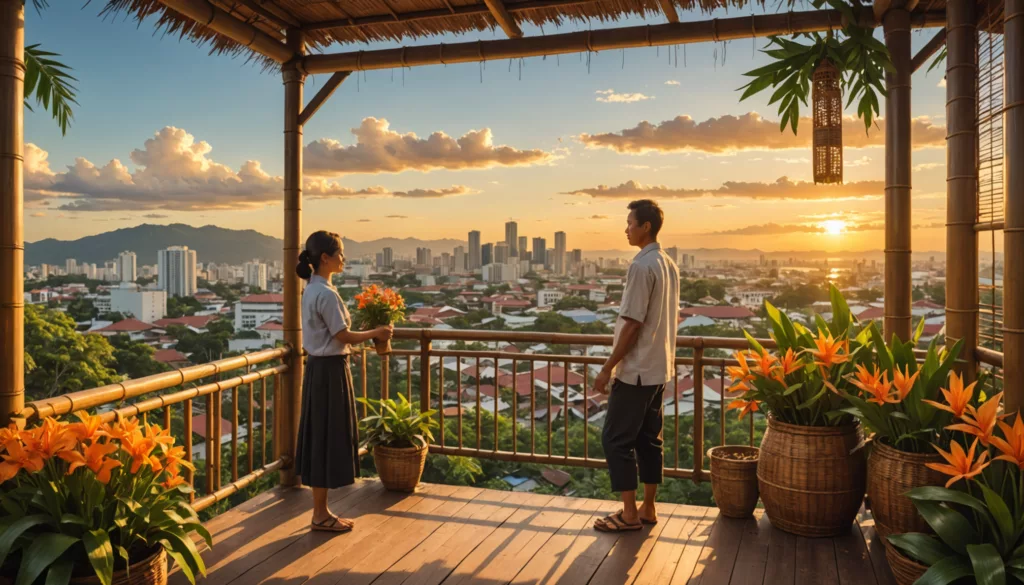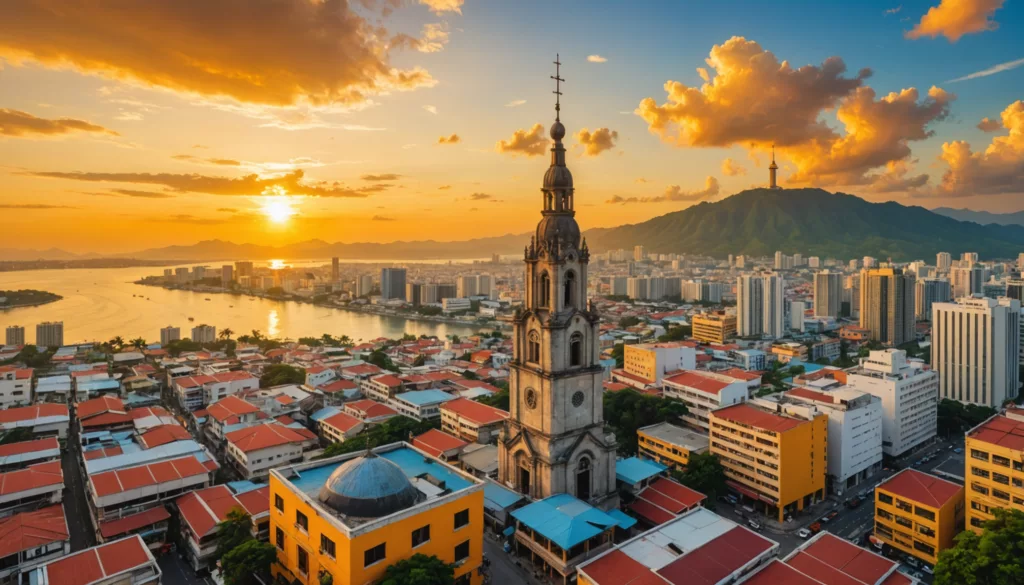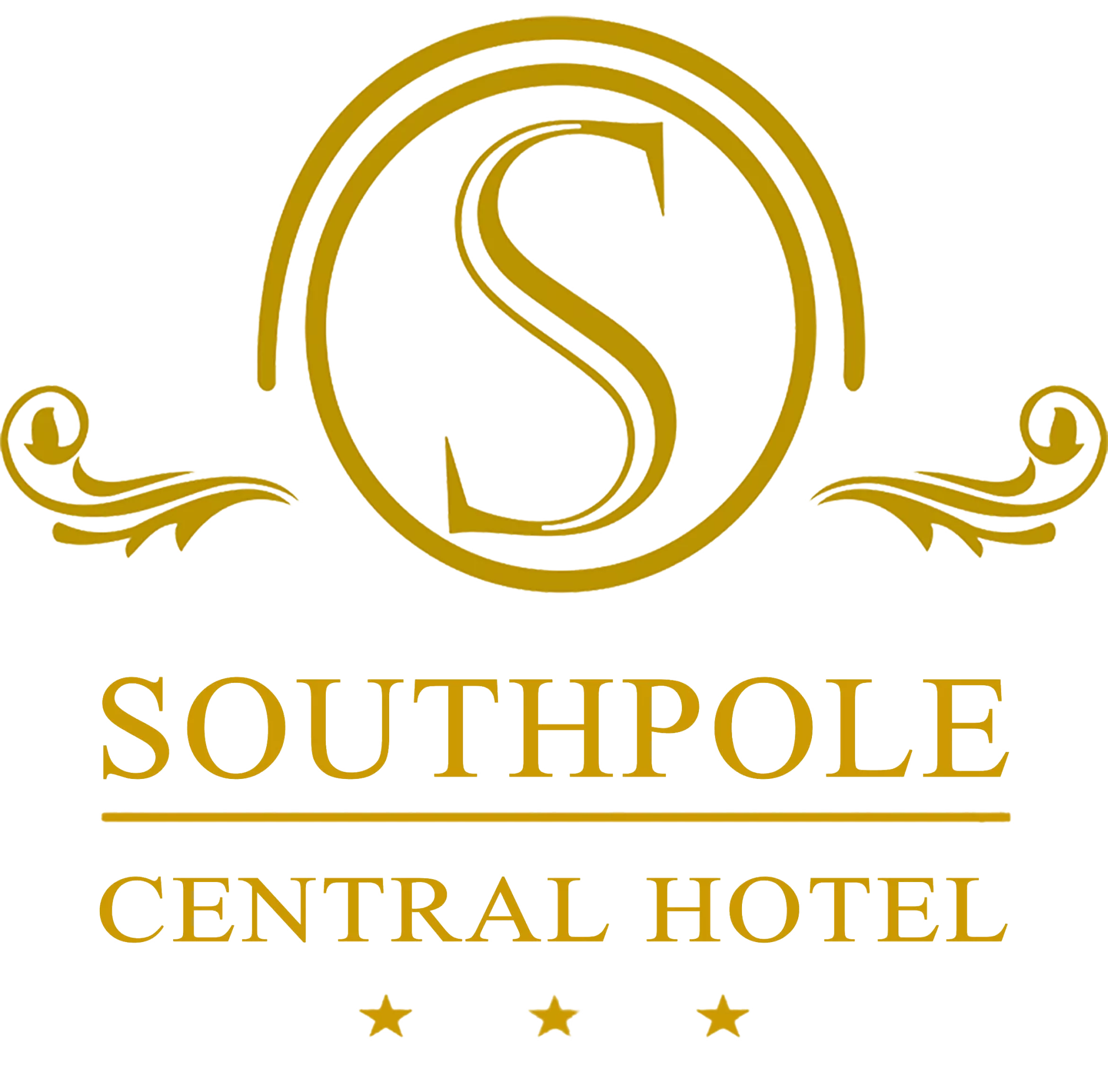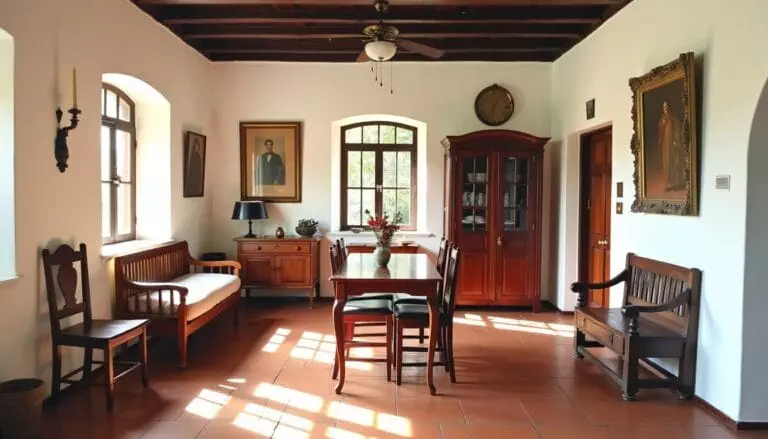Good Morning in Cebu: A Guide to Cebuano Greetings
Standing at the heart of Filipino culture, mastering the art of saying “Good Morning in Cebu” can make or break your business connections and travel experiences. The warm Cebuano greeting of “Maayong Buntag” opens doors to authentic interactions and shows respect for local customs in this vibrant Philippine city. Whether you’re closing an important deal or organizing a cultural event, understanding these morning salutations is essential.
In the bustling streets of Cebu, where Bisaya is the primary language, proper morning greetings demonstrate cultural awareness and professionalism. This guide will explore the various ways to express good morning in Cebuano, reveal the cultural significance behind these greetings, and share expert tips for using them effectively in both business and social settings. Join us as we unlock the secrets to making meaningful connections through the power of local morning greetings in Cebu’s dynamic community.
Understanding “Good Morning” in Cebuano

“Good Morning in Cebu” highlights the warmth and respect often shown by Cebuano speakers. Saying “maayong buntag” (good morning) connects you with local culture and fosters friendly relationships in Cebu. This greeting reflects the deep sense of community shared by many Filipino people and other Bisaya speakers.
The Importance of Saying Good Morning in Cebu
A simple “good morning” can make a big impact. In Cebu City and other regions where Cebuano (also called Bisaya) is common, morning greetings show courtesy toward friends, family, or coworkers. Showing respect through kind words aligns with local customs and encourages positive interactions. (Wikipedia, Gutenberg)
Cebuano Language Basics: Greetings
Cebuano belongs to the Visayan languages, which span several islands in the Philippines. Aside from “maayong buntag,” morning greetings include warm phrases like “maayong adlaw” (good day). To address others properly, remember that phrases may change slightly across regional languages. Local speech patterns can differ, yet the core meaning of morning greetings remains the same. (Traveloka)
Cultural Significance of Good Morning in Cebu
Morning customs in Cebu often include sharing a meal or acknowledging neighbors during dawn hours. Greeting others with “maayong buntag” helps you honor these traditions. This practice also connects visitors to older generations who value heritage and respectful dialogue.
The Role of Morning Greetings in Cebuano Society
Early-day greetings set a polite tone for social life. They promote kindness and help build trust within families, workplaces, and communities. By using expressions like “maayong buntag,” you show interest in local norms and strengthen relationships with residents across Cebu and beyond.
Variations of “Good Morning” in Cebu

You benefit from learning how to say good morning in Cebu because it helps you connect with Cebuano speakers. These variations build cultural bridges and show genuine respect for local customs.
Different Ways to Say Good Morning in Cebuano
You hear “Maayong Buntag” most often as a standard, respectful greeting. You might also try “Mayong Buntag” for casual use or “Maayung Buntag” in certain regions. Both forms stay clear and polite. (Mylanguageexchange)
Common Greetings Among Bisaya Speakers
You discover many common expressions woven into morning interactions. “Maayong kaadlawon” fits early dawn, while “Maayong udto” covers mid-morning. “Maayong buntag diha” adds a personal twist when you greet someone who is far away.
| Greeting | Usage | Context |
|---|---|---|
| Maayong buntag + Kumusta ka? | Daily mix | Friendly, informal |
| Maayong buntag diha | Personal touch | Friends or family in another place |
| Maayong kaadlawon | Very early | Dawn or pre-sunrise |
Regional Dialects and Their Influence on Greetings
You notice Cebuano greetings vary around Cebu City. Northern areas favor shorter forms like “Mayong,” while southern zones keep strong “Maayong” annunciation. In Metro Cebu, you use a blended style because of modern influences.
Formal vs. Informal Morning Greetings
You rely on more formal greetings in business or when addressing Filipino people you respect. For instance, “Maayong buntag po” plus a polite bow signals courtesy. In casual chats, you shift to “Mayong” or relaxed terms like “morning sunshine” to set a friendly tone.
How to Use “Good Morning” in Context

When you visit Cebu City or other areas in the Visayan region, you hear “Maayong Buntag” used every morning. This phrase means “Good Morning” in Cebuano, which is a major language spoken by many Filipino people in the south. Using the right greeting shows cultural awareness and helps you connect with Bisaya speakers. (Manifold)
Greeting Friends and Family in Cebu
You greet close friends and relatives with “Maayong Buntag” and occasionally shorten it to “Mayong Buntag.” For elders, you add “Nang” (female) or “Manong” (male). For younger individuals, you use “Day” (female) or “Dong” (male). You may perform the “mano” gesture by lightly pressing the elder’s hand to your forehead as a sign of respect.
Professional Greetings: When and How to Use Good Morning
Formal morning greetings work best in business or official language settings. You often say “Maayong Buntag po” and include “sir” or “ma’am.” These greetings are suitable until 11:30 AM.
| Setting | Appropriate Greeting | Notes |
|---|---|---|
| First meetings | “Maayong Buntag po” | Add sir/ma’am for respect |
| Office colleagues | “Maayong Buntag” | Maintain a polite tone |
| Business emails | “Maayong Buntag” | Keep it brief and clear |
The Role of Good Morning in Social Interactions
A proper morning greeting shows respect and builds friendly connections. It can help you earn trust, spark conversation, and avoid misunderstandings with Cebuano and other regional languages. Polite greetings often lead to stronger relationships in both casual and business settings.
Time-Appropriate Greetings Throughout the Day
• 4:00 AM – 6:00 AM: “Maayong Kaadlawon” (early morning)
• 6:00 AM – 11:30 AM: “Maayong Buntag” (good morning)
• 11:30 AM – 1:00 PM: “Maayong Udto” (midday/noon)
Using each greeting at the correct time reflects your respect for Bisaya customs and highlights your willingness to learn Cebuano culture.
Common Misconceptions About Cebuano Greetings

Common misunderstandings about good morning in Cebu can confuse you when you visit Cebu City or other Bisaya-speaking areas. You might hear Filipino people use Tagalog language phrases like “Magandang Umaga,” but locals often prefer Cebuano greetings such as “Maayong Buntag.” Knowing these differences helps you show respect and build stronger connections.
Understanding Cultural Nuances in Good Morning
Greetings have rhythm and timing in Cebuano. “Maayong Buntag” follows a light rising tone on “Maa-” and a gentle fall on “-yong.” Most people greet elders or authority figures first to show courtesy. You can offer a small bow or a nod for added respect.
Myths Surrounding Greetings in the Bisaya Culture
Many assume all Filipino greetings work everywhere. In reality, Cebuano’s unique phrases reflect Bisaya languages and traditions. Some believe formal words always earn admiration, but most locals value a relaxed approach in daily life. Time also matters: “Maayong Buntag” suits morning to evening transitions only if you switch to “Maayong Hapon” after noon.
| Myth | Reality |
|---|---|
| All Filipino greetings apply in Cebu | Cebuano phrases are unique to the region |
| Overly formal greetings make a better impression | Casual words often fit everyday situations |
| Translating English greetings works fine | Cultural context and tone carry greater importance |
Navigating Language Barriers with Good Morning
You may struggle with “ng” sounds in “Maayong Buntag,” but native speakers usually appreciate honest effort. Avoid mixing Tagalog language terms, and pay attention to social cues. Recognizing the correct greeting for each hour shows respect for indigenous languages in the region.
Expert Insights on Common Greeting Mistakes
Experts suggest listening to how majority of people pronounce “Maayong Buntag” in real-life settings. Practice with friends who speak Cebuano, and watch for slight variations among regional languages. You can also observe body language daily, since eye contact and a smile add warmth to any greeting.
Practical Tips for Using “Good Morning” Effectively

Expert Recommendations on Morning Greetings
Cebuano speakers often say “Maayong Buntag” to convey good morning. This phrase is pronounced “ma-AH-yong BOON-tag,” with a gentle rise in tone. A slight nod or bow can reinforce sincerity, especially in formal settings. Speakers should match morning greetings to the time of day and use a clear, respectful tone.
Key Practices:
• Articulate each syllable distinctly
• Offer brief but direct eye contact
• Add a small bow or respectful nod
• Adapt greetings based on social context
Personalizing Your Good Morning Message
Customized greetings enhance interactions within Bisaya-speaking communities. When addressing elders or authority figures, “po” after “Maayong Buntag” communicates respect. Close friends and colleagues often appreciate hearing their name or title, which adds warmth to the greeting. Adjusting slight nuances fosters rapport and shows cultural awareness.
Variations for Different Audiences:
- Maayong Buntag, Manang or Manong (older individuals)
- Maayong Buntag, [Name] (friends/colleagues)
- Maayong Buntag po (formal gatherings)
Engaging Conversations Starting with Good Morning
An effective opening to conversation begins with “Maayong Buntag,” followed by a brief pause for acknowledgment. The question “Kumusta ka?” (How are you?) naturally continues the exchange. Waiting for a response before proceeding demonstrates genuine interest. Maintaining steady eye contact and an attentive posture encourages more in-depth discussions.
Conversation Flow Example:
- “Maayong Buntag”
- Pause for acknowledgment
- “Kumusta ka?”
- Listen and reply sincerely
Building Relationships Through Proper Greetings
Regular use of polite morning greetings strengthens bonds in Cebuano culture. Proper gestures, respectful language, and consistent engagement show regard for local customs. Sharing “Maayong Buntag” each day helps establish trust and builds lasting connections.
Morning Greeting Table:
| Setting | Greeting | Notes |
|---|---|---|
| Family | Maayong Buntag + name | Casual, warm |
| Work | Maayong Buntag po | Formal, respectful |
| Public | Maayong Buntag | Standard, polite |
| Elders | Maayong Buntag po + title | Highly respectful |
Contemporary Usage and Modern Adaptations

You can see how Cebuano greetings blend tradition with ongoing digital trends in Cebu City and beyond. Good Morning in Cebu remains a key cultural practice even as new communication tools evolve.
Digital Greetings in Cebuano
Modern platforms often reshape “Maayong Buntag” (Good Morning). You may encounter:
• MB – A quick text abbreviation
• Mayng Buntag – Casual spelling style
• Good AM – A Taglish hybrid often used by Filipino people
| Platform | Formal Style | Casual Style | Emoji Usage |
|---|---|---|---|
| Business Email | Maayong Buntag | Not recommended | None |
| Text Messages | Maayong Buntag / MB | Mayng Buntag | Optional |
| Social Media | Either form | Any variation | Common |
Social Media and Messaging Etiquette
You have more flexibility on social networks and messaging apps. Emoticons or emojis often accompany your Good Morning in Cebu. Voice messages using “Maayong Buntag” also grow in popularity across bisaya languages. Mixed-language greetings are normal, reflecting the diverse regional languages of the Philippines.
Professional settings, including Cebu Pacific and formal LinkedIn groups, still expect complete Cebuano greetings. Many video calls begin with a polite “Maayong Buntag,” showing respect for local customs.
Business Communication Standards
Formal business environments in Cebu follow official language protocols. You typically open emails with “Maayong Buntag,” then include honorifics like Sir or Ma’am. Meet-and-greet sessions rely on respectful forms of Good Morning in Cebu, showing awareness of hierarchy in majority of people’s workplaces. Code-switching between English and Cebuano is acceptable when speaking with large groups, as it bridges cultural nuances.
Looking for the perfect place to experience the warmth of Cebuano hospitality? Look no further than Southpole Central Hotel! Located in the heart of Cebu City, our hotel offers comfortable accommodations, modern amenities, and friendly staff who will make you feel right at home. Wake up to a delicious breakfast and a hearty “Maayong Buntag” from our team, ready to help you explore the best of Cebu. Whether you’re here for business or leisure, Southpole Central Hotel is your ideal starting point for an unforgettable Cebuano adventure. Book your stay today and experience the true meaning of “Maayong Buntag”!
Conclusion
Learning to say “good morning” in Cebuano opens the door to meaningful connections in Cebu’s vibrant culture. Whether you’re using “maayong buntag” with family and friends or in professional settings, understanding these greetings helps you show respect and build authentic relationships with Bisaya speakers. The various regional expressions and cultural nuances we’ve explored make morning greetings in Cebu truly special.
Remember that mastering Cebuano greetings is about more than just words – it’s about embracing the warm, welcoming spirit of the Filipino people. As you practice these morning greetings in your daily interactions, you’ll discover how a simple “maayong buntag” can brighten someone’s day and create lasting connections in the beautiful city of Cebu.
Your journey into Cebuano language and culture has just begun. Each morning greeting you share helps preserve and celebrate this rich linguistic tradition that makes Cebu’s community so unique.
FAQs
1. How do people say “Good Morning” in Cebuano?
Most speakers use “Maayong Buntag” to greet someone in the morning. This phrase is common across Cebu City and other Bisaya regions, which are part of the larger group of regional languages in the Philippines. It covers the early hours from dawn until around 11:00 AM.
2. Are there formal and casual versions of this greeting?
Yes. Adding “po” or addressing someone as “Sir/Ma’am” makes it more polite: “Maayong Buntag po” or “Maayong Buntag, Sir/Ma’am.” Other Filipino people often recognize these forms as a nod to respect. For casual settings, “Maayong Buntag” alone is enough.
3. How is “Maayong Buntag” pronounced?
Basic Components:
- Maayong: Ma-ah-yong
- Buntag: Boon-tag
Tips for Clear Pronunciation:
- Place stress on the second syllable of “maayong.”
- Keep the final “ng” smooth.
- Enunciate “buntag” with a crisp “t.”
4. What are some common variations of the “Good Morning” greeting in Cebuano?
- Formal Setting: Maayong Buntag po, Maayong Buntag, Sir/Ma’am
- Casual Setting: Maayong Buntag, Buntag ra
- Very Informal: Buntag, Ma-buntag
5. How is “Maayong Buntag” used in different situations?
Professional Settings: In business meetings, most speakers say “Maayong Buntag po” while giving a light nod. Offices often hear “Maayong Buntag” among colleagues. Customer-facing staff greet patrons with “Maayong Buntag, Sir/Ma’am.” Casual Settings: Close friends use “Buntag ra” or “Ma-buntag.” Families say “Maayong Buntag” at breakfast time. Neighborhood chats sometimes shorten it to “Buntag.”





